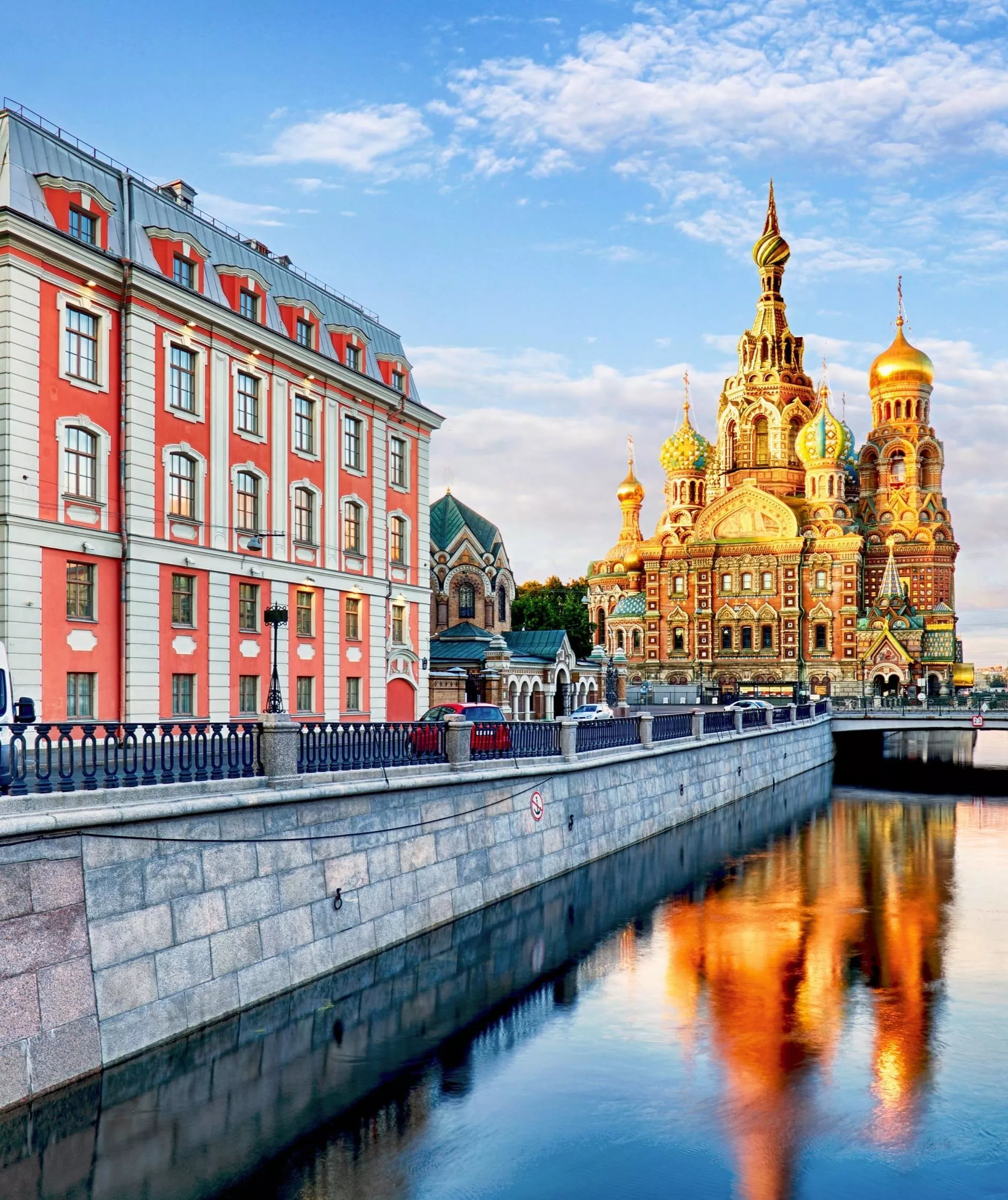Sights of St. Petersburg
- 18 June 2024

The main sights of St. Petersburg
They are going to the northern Russian capital for history. The whole city must be one huge cultural monument. It's almost impossible to see everything in one trip, so it's better to start with the iconic sights of St. Petersburg, and only then delve into the lesser-known ones. The article contains a list of places to go and what to see first.
Hermitage
Perhaps every citizen of Russia has heard about the Hermitage in St. Petersburg. This is one of the most famous sights of the northern capital. It is a complex of several buildings along the Neva embankment, the main of which is the Winter Palace. It was originally built according to the design of architect Rastrelli for Empress Elizabeth Petrovna. But soon Catherine the Great ascended to the throne, who became the rightful owner. It was she who began to collect a large collection of famous paintings in the palace, and then other works of art.
The collections became cramped in one palace, so a separate building was built for them — the Grand Hermitage. Subsequently, other buildings of the complex appeared. In 1851, by order of Emperor Nicholas I, the imperial collection became available to everyone.
Today, the museum's collection contains about 15 million exhibits. Among them are paintings, sculptures, graphics, objects of applied art, archaeological finds and numismatics. Famous paintings of world importance are kept here — "Madonna Conestabile" by Raphael Santi, "Danae", "The Return of the Prodigal Son" and "Portrait of an Old Man in Red" by Rembrandt, "Judith" by Giorgione and many other masterpieces.
Nevsky Prospekt
Nevsky Prospekt is the heart of St. Petersburg, its main artery and symbol. It has long ceased to be just a street, it is a real attraction where tourists are sure to go. A wide street with a length of almost five kilometers passes through many historical districts and iconic places, including:
- Vosstaniya Square. It is convenient to start a walk along Nevsky Prospekt from here. It is located near the Moskovsky railway station. An obelisk "To the Hero City of Leningrad" is installed in the center of the square.
- Anichkov Bridge on the Fontanka River, one of the oldest and most popular bridges in St. Petersburg. You can walk along the beautiful promenade with its many attractions. There is a famous tiny statue of Chizhik-Pyzhik, an Iron House, Anichkov Palace. The bridge itself is decorated with sculptures by P.K. Klodt. Especially beautiful photos are taken here in the early morning.
- The Yeliseyev Merchants store, opened in 1903, is still open today. It is easy to recognize it by its original facade, and inside it impresses with the luxury of the decoration of the trading halls. Back in the early 20th century, the store operated on the principle of modern supermarkets, where you could buy everything. There is a theater hall on the second floor. Coming from simple peasants, Eliseev was able to become a rich merchant who supplied provisions to the imperial court in St. Petersburg.
- Catherine Square and Alexandrinsky Theatre. A monument to Catherine II has been erected in the center of the square, it is more than 150 years old.
- A large Gostiny Dvor. The building with large columns occupies an entire block, the total perimeter is more than a kilometer. It can be called the first indoor market in Russia. It was built by decree of Catherine II on the site of wooden trading shops.
- The book house, which was originally built for the sewing machine manufacturer Zinger. A building with unusual architecture, which is crowned by a large glass globe.
- Admiralty house. Nevsky Prospekt starts from the Admiralty building — this is the first Baltic shipyard. The blueprints for the construction of the project were signed by Peter I. During his time, ships were built here. And now the Main Command of the Russian Navy is located.
Nevsky Prospekt is always busy: noisy crowds of tourists and locals, numerous cafes and restaurants, shops and shopping centers. It is not just an attraction and a place to walk, but a whole world where centuries of art, culture and history are intertwined in a living portrait of St. Petersburg.
The Russian Museum
Russian Russian Museum is the largest museum of Russian art in the world. It is located in St. Petersburg, in the building of the Mikhailovsky Palace (main building), as well as the Stroganov and Marble Palaces, Mikhailovsky Castle. The museum was founded in 1895 by order of Emperor Nicholas II. Since then, his collections have been constantly replenished and expanded and have become a real treasure trove of Russian national heritage.
The museum's collection includes more than 400 thousand exhibits, including paintings, icons, sculptures, graphics, photographs and other works of art. Among the most famous works are "The Last Day of Pompeii" by Karl Bryullov, "The Appearance of Christ to the People" by Alexander Ivanov, "The Ninth Shaft" by Ivan Aivazovsky and many others.
In addition to the permanent exhibition, the Russian Museum regularly hosts temporary exhibitions with works by contemporary artists, workshops, lectures and various cultural events for adults and children.
Cabinet of curiosities
The Kunstkammer is the oldest museum in St. Petersburg, founded by Peter the Great in 1714. During his trips abroad, the tsar bought various rare things — weapons, books, anatomical sculptures, rare minerals. These items became the basis of the collection, which today contains unique cultural and everyday sights of various peoples of the world.
The main exposition of the museum is located in a building built specifically for it in 1726-1734. The building itself is of unusual shape, decorated with sculptures and bas-reliefs. There are many interesting exhibits in the museum, here are some of them:
- Anatomical collection. This is the most famous part of the museum — various anatomical anomalies and deformities are collected here, including real human bodies and body parts with various deformations. For example, the skeleton of Siamese twins, which was acquired by Peter I.
- Ethnographic collection. Cultural and everyday objects of various peoples of the world are presented here. It is interesting to see different types of traditional clothes, jewelry, tools, musical instruments and many other attractions.
- An exposition dedicated to Lomonosov and the Academy of Sciences. The collection includes personal belongings of the nugget scientist, instruments and even a realistically recreated model of a chemical laboratory.
St. Isaac's Cathedral
St. Isaac's Square is home to one of the most famous temples in St. Petersburg, which has become not just a landmark, but a symbol of the city on the Neva River, the greatest monument of Russian architecture. The cathedral was built in the 19th century by architect Auguste Montferrand, and a record 23 million rubles were spent on construction.
The height of the cathedral is 101.5 meters, and its capacity is about 12 thousand people. The interior of the temple is striking in its luxury: the walls and ceiling are decorated with mosaics, frescoes and icons, granite columns and porticos with figures of the apostles. The architectural style of the cathedral combines elements of neoclassicism and Baroque. The huge gilded dome with a height of more than 100 meters has long been considered the tallest architectural structure in the world.
St. Isaac's Cathedral today is not only a religious temple, but also an important cultural and tourist site. Its roof offers a breathtaking view of the historical center of St. Petersburg, and the interior atmosphere is filled with holy reverence and majestic beauty.
Summer Garden
The Summer Garden is one of the top attractions of the northern capital.It is located on the banks of the Neva River and covers an area of about 10 hectares. Created by order of Peter the Great at the beginning of the XVIII century, the Summer Garden became the first public park in Russia and became an example for many other parks throughout the country.
The garden is decorated with beautiful fountains, marble sculptures, and rare plants. It is surrounded on all sides by rivers — Moika, Fontanka, Neva and Lebyazhya Kanavka. On the Neva side, the park is fenced with the famous lattice fence, designed by the beloved architect Catherine II Yu. Felten. And there is also a long-lived oak tree from the time of Peter the Great, it is already more than 300 years old. There is a memorial plaque next to the tree, which indicates the size of the oak — 38 meters in height and 333 centimeters in girth!
The garden was created in the style of French regular parks — all the trees and shrubs are planted in a strict geometric order. In the center there is a large round pond, around which there are alleys. Here you can walk along the picturesque canals, enjoy the scent of flowers, admire the singing of birds and take interesting photos.
During the Second World War, there was an anti-aircraft battery in the Summer Garden. The sculptures were saved by hiding them underground. When the garden was restored after the war, they were returned to their places.
Various events are regularly held in the garden — concerts, exhibitions, festivals, and the famous Peter the Great assemblies and folk festivals were held under Peter the Great.
The Mariinsky Theatre
Another iconic landmark of the northern capital, as well as one of the leading Russian opera and ballet theaters, is the Mariinsky Theater. It was founded in St. Petersburg in 1783 by order of Catherine II and was originally called the Bolshoi Stone Theater. Unlike other theater buildings, most of them wooden, it was built of stone. The theater became the cultural center of St. Petersburg, but at the beginning of the XIX century there was a fire that destroyed all the interior decoration. The facade of the building was also damaged.
It took seven years to recover. The building of the modern theater was built on the site of the circus theater, which was located opposite the Bolshoi. The construction was supervised by Alberto Cavos. The new theater was given the name Mariinsky, in honor of Alexander II's wife Maria. The first production on the Mariinsky stage was the play "Life for the Tsar", it was in 1860.
Over the years of its existence, the theater has been repeatedly rebuilt and modernized. For example, the famous turret on the dome appeared only at the beginning of the XX century. In fact, it serves to mask the ventilation pipe.
In the 20th century, the Mariinsky Theatre went through several reforms and changes. In 1935, it was renamed the Kirov Theatre in honor of the revolutionary Sergei Kirov. However, in 1992, the original name was returned.
Many famous opera and ballet works were staged for the first time on the stage of the Mariinsky Theatre in St. Petersburg. For example, "Swan Lake", which is considered the business card of the Mariinsky.
Kazan Cathedral
Kazan Cathedral was built in the early 19th century on the site of the wooden Church of the Nativity of the Virgin, which by that time was already dilapidated. The temple was consecrated in 1811 and an icon of the Kazan Mother of God was brought, which remained intact after the fire in Kazan.
The architectural appearance of the cathedral combines elements of Russian and Baroque styles. Paul I wanted him to repeat St. Paul's Cathedral in Rome. The main facade is decorated with numerous columns and pilasters, and its central part is a high portal with the image of Our Lady of Kazan. The huge domes of the cathedral, covered with gold, create a majestic appearance and give it a special architectural sophistication. The interior walls were painted by famous painters Fyodor Bruni, Karl Bryullov and others.
The history of the Kazan Cathedral is closely connected with the history of Russia. Mikhail Kutuzov visited the temple before leaving for the Patriotic War, and his funeral service was held here in 1813. 25 years after the victory over Napoleon, monuments to Field Marshals Mikhail Kutuzov and Mikhail Barclay de Tolly were erected on Cathedral Square.
Kazan Cathedral was the court temple of the Romanovs — imperial personages were married here, thanksgiving prayers were served. During the First World War, a charity center was organized at the temple — they collected things and food for the front.
In Soviet times, the Kazan Cathedral was closed and made a museum of the history of religion and atheism. The museum staff moved the relics of the saints to the attic and they were hidden for a long time. When the temple became operational again in 1991, the relics were returned.
Church of the Savior on Spilled Blood
The Church of the Savior on Spilled Blood in St. Petersburg is a majestic Orthodox church built on the site of the death of Emperor Alexander II, who became a victim of a terrorist act in 1881. First, a small chapel was built, and then, by order of Alexander III, who ascended the throne, a temple was built. It was built for a long 14 years, the most advanced technologies were used in the construction. It stands out for its colorful mosaic decoration, consisting of more than 7 thousand square meters of mosaics depicting biblical scenes and saints. The architecture of the cathedral resembles the Moscow St. Basil's Cathedral.
Inside the temple, you can see the place where the emperor was killed. Under the stone dome, a section of preserved cobblestone pavement is fenced, on which the blood of the king was shed. Precious and semi-precious stones, which were brought from different parts of Russia, were used in the decoration of the tent. The central iconostasis of the temple is made of colored Italian marble.
After the revolution, the temple was wanted to be demolished several times. First there was a morgue, then a warehouse for theatrical decorations. During the Great Patriotic War, an artillery shell hit the main dome, but did not explode.
Now the temple is in operation, services are held in it in the mornings and evenings. During the day, you can get into it by tickets, they are sold online on the website of St. Isaac's Cathedral or directly on the spot. The guide tells the history of the temple, shows the interior decoration.
You can easily explore all the sights if you stay at the Cosmos Hotel on Nevsky Prospekt. It is located next to the Moscow Railway Station. Thanks to its convenient location, all iconic places will be within walking distance and transport accessibility.


